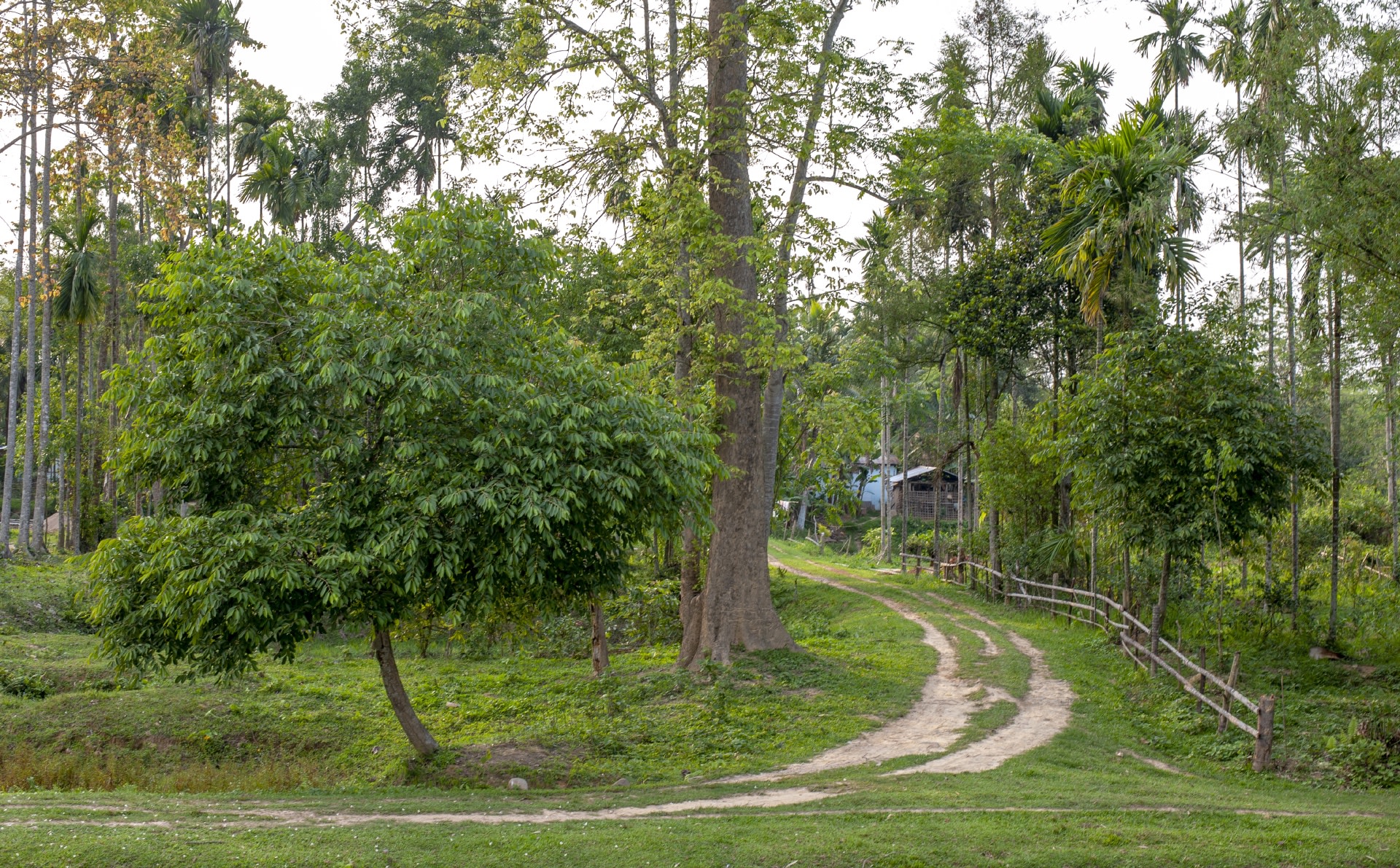 Listen to this article
•
15:34 min
Listen to this article
•
15:34 min
Along the eastern edge of Hollongapar Gibbon Sanctuary in Assam’s Jorhat district, Lakhipur is a small village of around 22 families. The homes are ensconced in the fold of banana and mango trees, white hibiscus, and giant rose bushes. The neat row of houses is sandwiched between small gardens in front and large swatches of tea gardens behind them, beyond which lies the forest.

On the second day of Rongali Bihu, I visit the village after an afternoon spent tracking the primates of the sanctuary with guide and Lakhipur resident Pradeep Baruah. He has invited me to his house for tea, but en route, we stop at several homes, where I am generously plied with traditional Bihu pitha sweets, strong red tea, and in one case, a stunning lavender-hued foxtail orchid from a garden. The koppow, as it is locally known, is a Bihu essential, worn by women in their hair during festive dances.
Photo: Priyambada Nath — CC BY 2.0
Assam’s major festival, ushering in spring and the Assamese new year, on the calendar lasts for a week, but celebrations stretch out over nearly a month. On the previous day, which marked the end of the year, the community celebrated Goru Bihu or cow Bihu, when the animals are bathed and worshipped in the morning.

When I meet Pradeep da, he is bursting with big news. On the afternoon of Goru Bihu, after the ceremonies were completed, a young calf from the village was picked up by a leopard. The stealthy cat struck unseen and unheard, in broad daylight.
On the fringes of the forest, this is not uncommon. While the arboreal primates of the sanctuary do not often venture out of the canopy cover, larger animals like leopards and elephants frequently visit human settlements in the vicinity of the forest. With limited resources in the small 20.98-sq-km sanctuary, the animals sometimes look for food sources outside their home ground.
While leopards often make off with goats and dogs, herds of elephants migrate through surrounding tea gardens, fields, and villages on their way to the Desoi Valley Reserve Forest on the Assam-Nagaland border. En route, the pachyderms eat young paddy shoots and sugarcane from the fields. The destruction of crops is a major point of contention between man and animal in this region.
For the residents of Lakhipur, elephants are quite literally in their backyard. Many families I visit show me their back gardens, lush with pepper and areca nut trees, and their privately owned bagan, or tea gardens.

Pradeep da tells me that this expanse of tea was originally rice fields, which each family would tend and live off of. Faced with the challenge of elephants destroying their crop, around 10 years ago the residents of Lakhipur gradually opted to switch to tea cultivation instead of paddy farming. For the village of small tea growers, elephant movement in their land remains a common phenomenon, but now, there is no damage to their cash crop, as the animals aren’t interested in tea bushes. Residents like Baruah accept that living on the border of the forest means sharing space, and sometimes resources, with animals.






